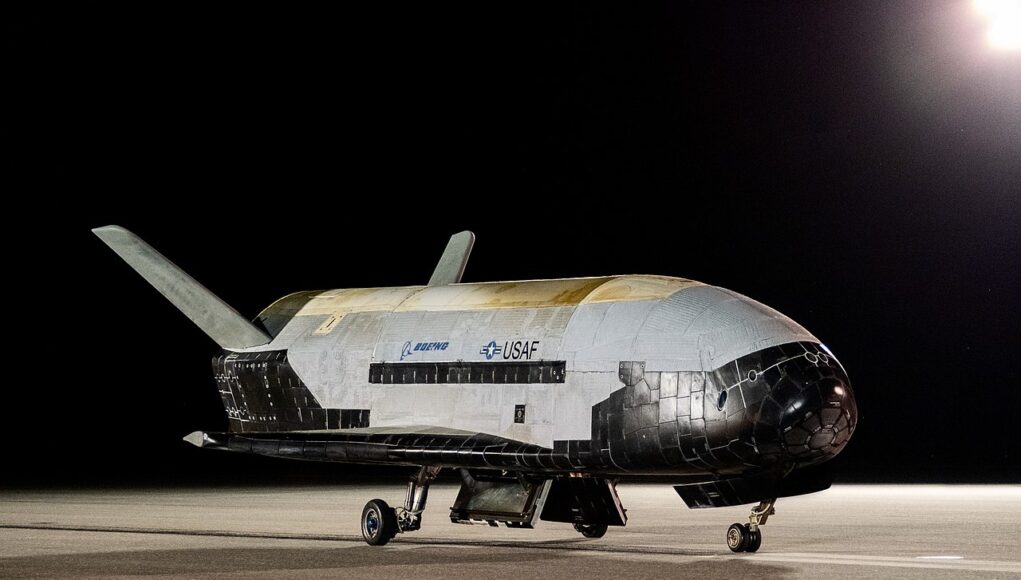The Boeing-built X-37B spaceplane, currently 10 months into its seventh mission, is preparing to carry out a series of advanced aerobraking manoeuvres to enhance the United States Space Force’s (USSF) understanding of fuel-efficient orbital techniques, according to a press release from Boeing.
The Orbital Test Vehicle (OTV-7), which has been operating in a Highly Elliptical Orbit (HEO) since December 2023, will use Earth’s atmosphere to slow down and reduce its altitude with minimal fuel consumption.
This will be the first time Boeing, the USSF, and the X-37B have attempted such a demonstration, which aims to further space manoeuvring capabilities. “Space is a vast and unforgiving environment where testing technologies is critical to the success of future endeavours,” said Michelle Parker, vice president of Boeing’s Space Mission Systems. “There is no other space platform as capable, flexible, and manoeuvrable as the X-37B, and its next demonstration will be another proof point that this test vehicle sets the pace of innovation.”
The aerobraking process will see the X-37B utilising atmospheric drag to reduce its energy and alter its orbit while using minimal fuel.
The disposal of the Service Module will adhere to established space debris mitigation standards, ensuring the orbit change is conducted in a safe and responsible manner. Once the aerobraking manoeuvres are complete, the X-37B will resume its mission objectives focused on testing and experimentation.
General Chance Saltzman, Chief of Space Operations for the USSF, stressed the importance of this milestone, stating: “This first-of-a-kind manoeuvre from the X-37B is an incredibly important milestone for the United States Space Force as we seek to expand our aptitude and ability to perform in this challenging domain.”














“Space, the final frontier. These are the voyages of…” 😉😁
does that come with a Buck Rogers clone? 😉
Hmmm…more in the mold of James T. Kirk…😁
I was reading up on this a while ago. Interesting bit of kit. Deployable equipment bay, for launching “stuff”, or just testing it in position, spare thruster housing aft, for testing new propulsion methods like the newer ion drives, etc.
That’s just the info they’re willing to publish…
The X-37B is now under the control of Space Force’s Delta 9 unit which is responsible for orbital warfare. It’s speculation, but informed speculation, that Space Force now sees the X-37B as a means to take out other nation’s satellites and anti-satellite capabilities.
TWZ has an in-depth look at the X-37B, which complements George’s article above.
Potential delivery of a prompt strike warpon from orbit, No booster required!
Gets me some Warpons and gets me them now!!!
The Russians were scared silly in the Cold war that the space shuttle was actually an orbital bomber for first strike counterforce, IIRC.
Wonder if that would still work?
Russia and China have long seen this platform as a weapon itself or weapon enabler. If Russia is indeed developing satellite killers which considering tests is pretty much certain this will undoubtedly be used in such a capability and with a lot more flexibility.
Centaur would be able to do a similar job too I suspect, it will be interesting to see what tasks they put these second stages up to as time passes and they sit in orbit awaiting all manner of potential reusable tasking.
Those quotes from Boeing made me smile, so blatantly a defensive pr manoeuvre to try to retain some semblance of competency and positive exposure in space after their humiliating disaster with Starliner et al in light of Space-Xs real or perceived successes and technical superiority. Have to ask how the hell did Boeing manage to create this amazingly impressive and reliable vehicle and yet be incapable of following it up with anything remotely useful even with enormous funding. Complacency doesn’t even start to explain matters.